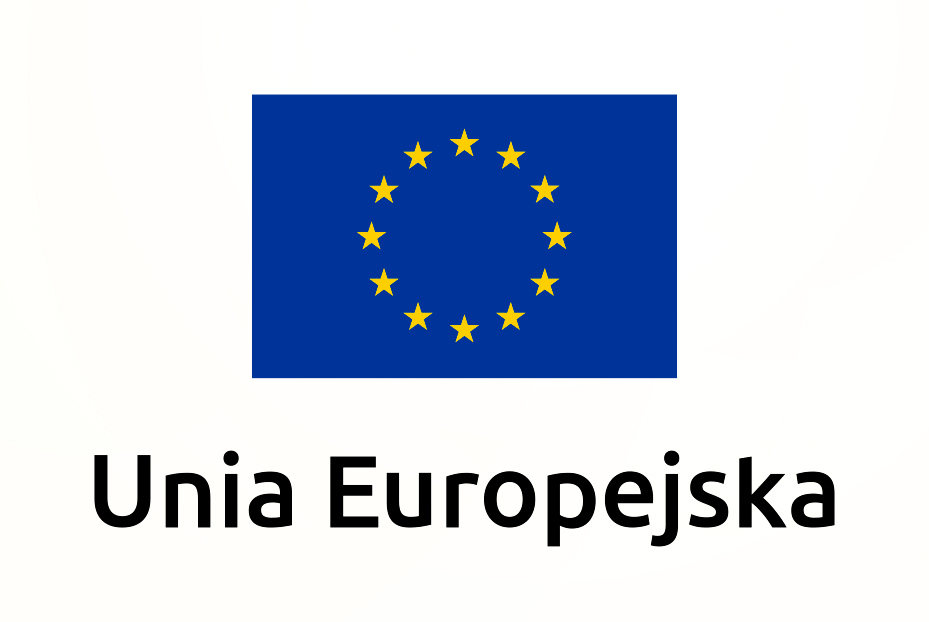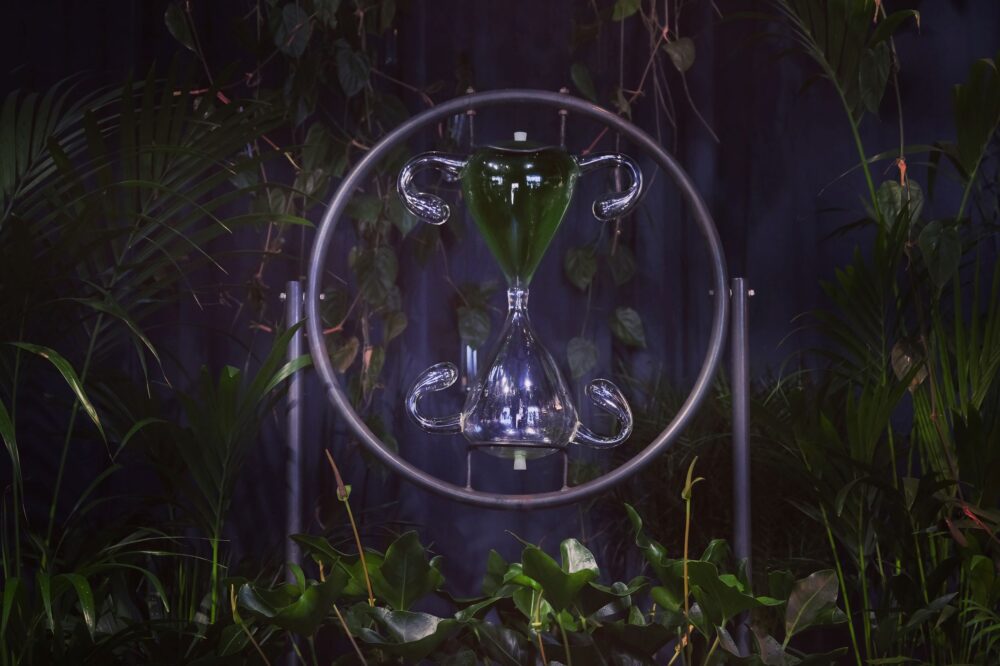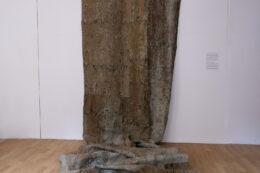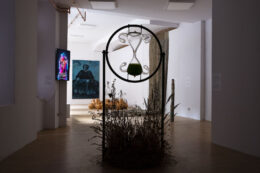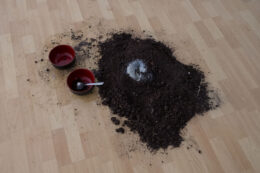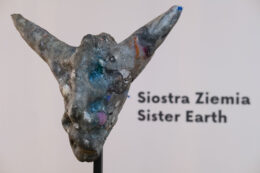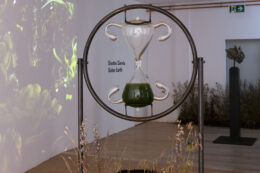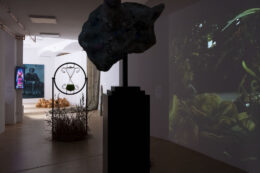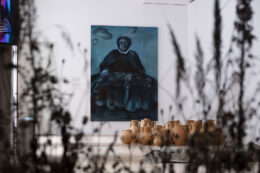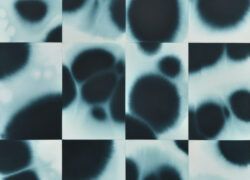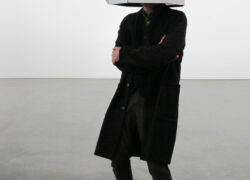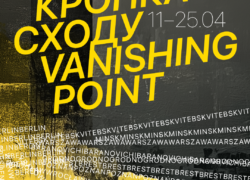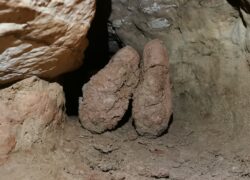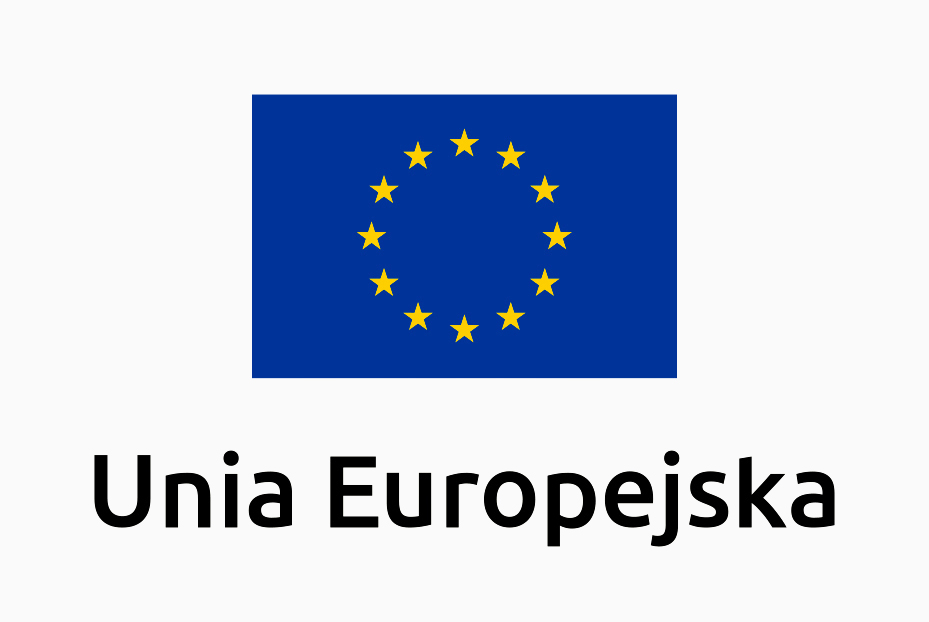The bodies of women and trees have ended up on the same side of the barricade
Joanna Rajkowska
We give ourselves to Mother Earth, Sister Earth. We are weaving this world together. We dedicate this exhibition to all sentient beings, the whole of Nature, Planet, and Cosmos.
Sister Earth will survive, we will not. This is evident. If we don’t start protecting Her, the catastrophe is coming soon. Nature is turning into an angry, destructive, life-draining Force. The goddess punishes humanity that, in its thoughtlessness, abuses Her every day. Man — a heterosexual white male who uses codified language and law and travels, a Christian — the one who usurped the authority to rule. He evaluates, arranges, labels, and assembles. He concludes the Darwinian evolutionary scheme, the Declaration of Human Rights was written for him, and Vitruvius and later Leonardo da Vinci used him in the blueprint of perfect human proportions, reflecting the ideal classical architectural order. He is an infallible maker, a divine controlling eye. He is still trying to maintain his egocentric subjectivity, inscribed in out-dated, hierarchical, unjust principles.
The revolution has already begun. It will bring change and already tramples the patriarchy with the use of a new language featuring feminist, decolonizing, LGBTQIA+ and ecological strategies.
The idea for this exhibition references the figure of Sister Earth and presents her from many perspectives, displaying problems that directly affect human and non-human existence. We decided no to call this Matter Magna Mater, because the relationship with one’s sister is more open that one’s relationship with the mother and devoid of vertical hierarchy and leadership, and because there seems to exists a kind of sacralisation and exaggeration of the figure of the mother. The sisterly relationship definitely provides more breathing space, freedom, joyfulness, and humour.
This Sister is Nature, zoe, a life that is out of control; it is biology, body, vitality; not a human, but the Other, not humanism but humusities, death without metaphysics, abject, anti-totalitarianism and anarchy, crossing boundaries and rebellion, change, matter, sexuality beyond gender, outside of gender and after gender.
Together with Sister Earth, we are sisters in resistance and in the struggle against the rotten order; we are sisters with care and in caring, in multiplicity and intersectionality, diversity, multi-directionality, interdependence. We are sisters with insects, plants, cells, seeds, archaea, and bacteria, with phytoplankton, trees, carps, octopuses, and dolphins. River Sisters are sisters with She-wolves, and Gaia with Cthulhu and Cthulucene. We are tentacular sisters; we are sisters in collective thinking and action, in multi-layered rhizomes and icy depths of the ocean. We are sistering arm in arm, courageously, inclusively, and playfully.
With tenderness and delight, James Lovelock presented the archetypal and metaphorical figure of Gaia. For him, hers was an ideal body, self-sufficient, and knowingly self-constituent. He later slightly modified this idea, and Tim Lenton and Bruno Latour created the concept of Gaia 2.0, pointing out that the Earth is not a single, self-regulating organism, but rather resembles an intelligent mechanism whose individual elements, consciously and collectively, work together while relying on intelligent life forms and even more intelligent machines.
Referring to the relationship between human and non-human beings, the ecofeminist Val Plumwood, wrote: “We are currently facing two major challenges, which are to re-insert people into the ecosystem and re-insert nonhumans into the ethical system.”[1]
Sisters demand change!
Katarzyna lewandowska
[1]Val Plumwood, Environmental Culture, lecture by Monika Żółkoś, Introduction to Animal Studies
participants: Dorota Chilińska, Martyna Jastrzębska, Agnieszka Kalinowska, Anna Kalwajtys, Linda Lemon, Angelika Markul, Joanna Rusinek, Aleksandra Ska, Liliana Zeic, Duet Kwiaty&Miut
curators: Dorota Chilińska, Katarzyna lewandowska
photo Jesteśmy częścią hydrosfery, Linda Lemon
